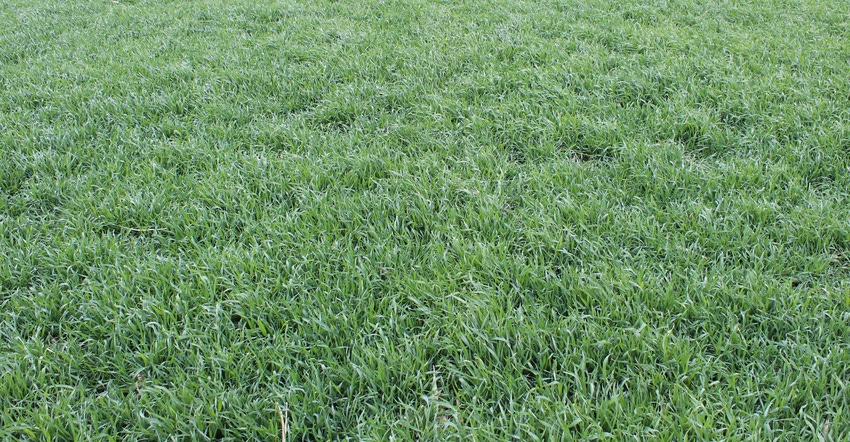January 23, 2020

Integrating perennial crops into corn and soybean rotations doesn’t consistently increase the ability of soils to store carbon, according to a new study that defies expectations for how diverse cropping systems affect carbon sequestration.
The study published recently in the academic journal Agriculture, Ecosystems & Environment compares the carbon-storage performance of conventional corn-soybean rotations with cropping systems that incorporate perennials and small grains such as oats.
Diversified crop rotations protect water quality and have other environmental benefits, but Michael Castellano, an Iowa State University agronomy professor and co-author of the study, says recent experiments show that improved carbon storage isn’t necessarily among those benefits. The findings run contrary to a widely held assumption that putting more roots in the ground for longer periods would increase the carbon content of soil, Castellano says.
“We can reject the hypothesis that, in Iowa, diversified cropping systems consistently store carbon better than corn-soybean systems,” he states.
Soil carbon storage has gained attention in recent years because it could play a role in mitigating climate change. Atmospheric carbon acts as a greenhouse gas, but storing carbon in the soil keeps it out of the atmosphere. So researchers are analyzing various agricultural production methods that might enhance carbon storage.
Soil type, weather
The ISU experiments involved three research farms in Iowa where diversified crop rotations grew alongside corn-soybean systems for years at a time. The researchers compared soil carbon content from the corn-soybean systems with that of the diversified systems and found no consistent differences. At only one of the three research farms did diversified crop rotations have greater soil carbon.
The findings fly in the face of expectations that the extensive root systems of perennials and cover crops would deposit carbon in the soils. Castellano says it’s likely that soil type, weather and environmental conditions play key roles in the ability of diversified rotations to increase soil carbon. Further study of how those variables influence one another will be necessary to accurately predict how farm management practices can increase carbon stocks in the soil.
“Not all practices work in all locations,” he says. “We need better predictability in carbon storage practices. We need to know what works and in what contexts it works.”
The diversified cropping systems in the experiments included rotations of corn, soybeans, oats and alfalfa. These rotations mirror the ag practices common in Iowa in the first half of the 20th century, before a corn and soybean rotation became the dominant cropping system in the state.
These diversified cropping systems provided farmers with grain to feed the horses that powered much of the machinery of the day. Crop rotations that include only corn and soybeans began to dominate the Iowa landscape later, as farming became more mechanized.
But an ISU scientist named John Pesek anticipated the shift to corn-soybean systems and began experimenting with such systems in 1954 at a research farm near Kanawha in northern Iowa. That research farm, and ISU farms near Nashua and Marsden, provided data for the current study, and Pesek’s foresight paved the way for Castellano and his team. “In 1954, if you told a farmer that corn-soybean rotations would dominate Iowa, they would have laughed at you,” he says.
The study was led by Hanna Poffenbarger, a former ISU graduate assistant who is now an assistant professor at University of Kentucky.
Source: ISU, which is solely responsible for the information provided and is wholly owned by the source. Informa Business Media and all its subsidiaries are not responsible for any of the content contained in this information asset.
You May Also Like




